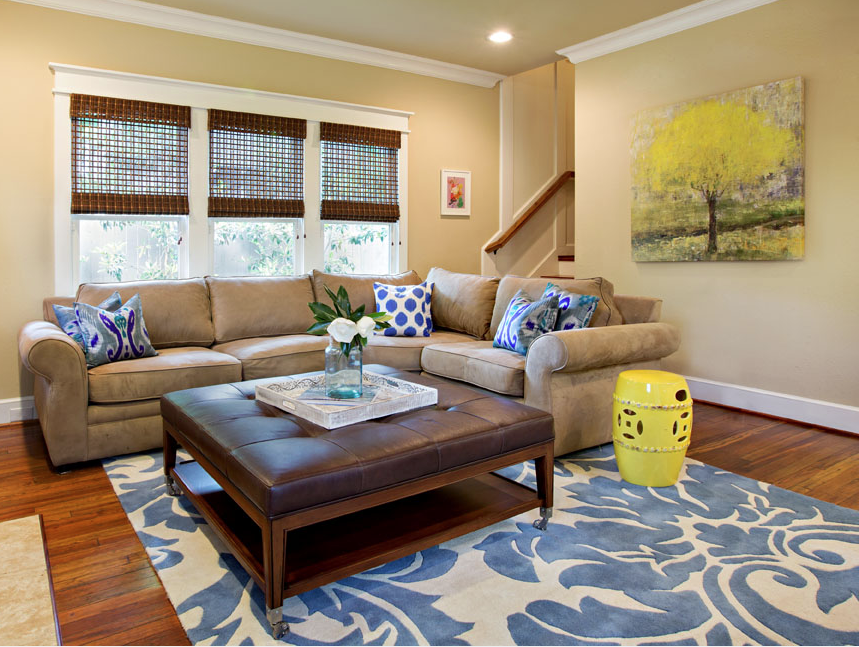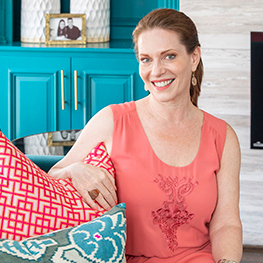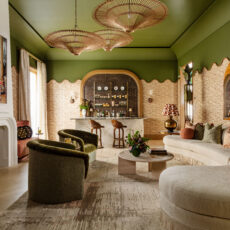Patterns add life to a room. They bring the personality and energy that a solid color usually can’t do alone. However, a design mistake we often see if using only a single pattern throughout an entire room. That can make your dynamic patterns seem bland when really they just need the perfect partner to help them stand out. For many people, mixing patterns is easier said than done. That’s why we have a few combinations that are foolproof for nearly anyone!
There are hundreds of different kinds of patterns, but these are the few main patterns you will see most often. These tried and true pattern combos will bring life to any space in no time at all.
Stripes and Dots
Stripes are, especially those in only two colors, are the simplest pattern to work with. In fact, they’re almost neutral. The classics you often see are black and white or navy and white, but you can use stripes to bring in a pop of color as well.
Polka dots are another common, nearly neutral pattern. They’re softer and somewhat more feminine than stripes, and they can add a wonderful texture to a blank space. This is a pattern in which scale is important—if the dots are too large they can be too bold and if they’re too small the space can seem cluttered.

When you bring them together, they’re perfect for a traditional, transitional, or even contemporary style. Try mixing different sizes of stripes and maybe a hint of polka dots. This is a pattern scheme that has plenty of personality.
Same-Scale Geometrics
Geometric patterns are made of repeating forms that are simple and linear. They usually use basic shapes, such as triangles, circles, and squares. Stripes can be considered a geometric, but true geometric patterns are more complex.
A foolproof pattern mixing combo is to choose geometric patterns that have a similar thickness of their lines and that are approximately at the same scale. You can use various colors and shapes, but pay close attention to your color palette and the scale of each pattern. You may also want to avoid circles, which can clash with geometric patterns that have sharp lines.
Black and White
Black and white is a classic for a reason. Mixing a few patterns in only black and white will almost always work, even when the scale of the patterns are different and the styles vary. If you’re going for this look, it may be best to go ahead and keep them all in a similar style. Keep in mind that you should also keep most of the patterns at 50 percent white at the least. This can prevent you from overdoing the black and darkening the space.
Are you redesigning your space? Patterns can be difficult to pair and work with sometimes. Schedule a consultation with Pamela Hope Designs today to talk patterns, color, and more!



